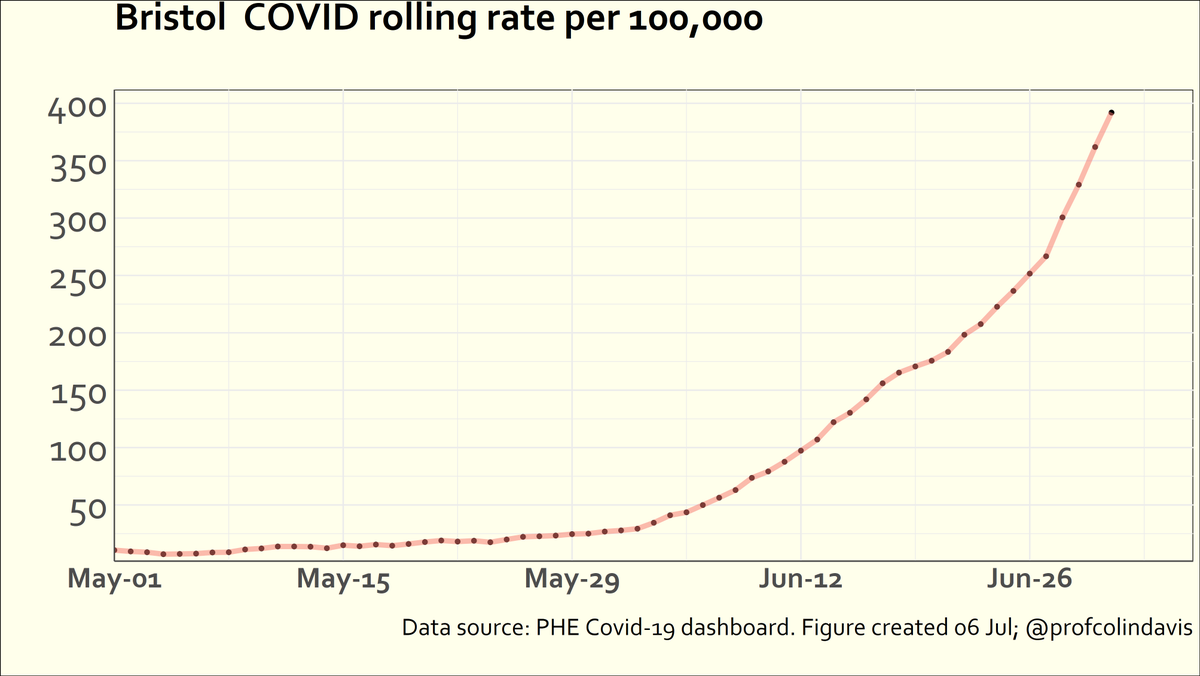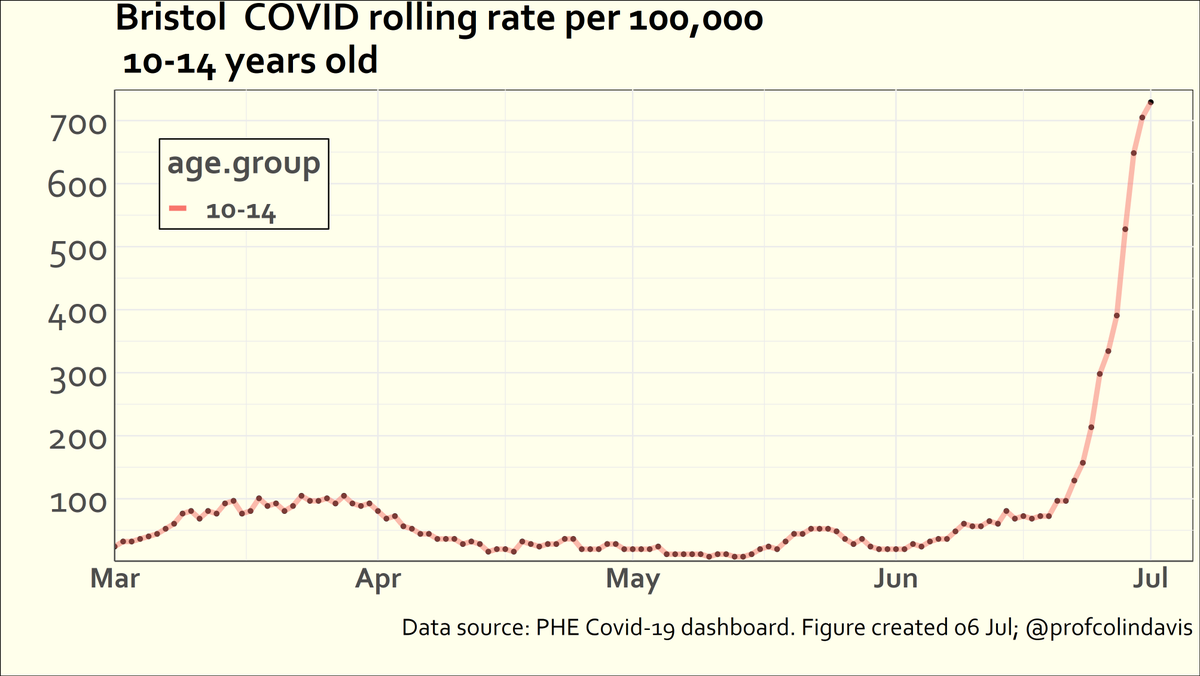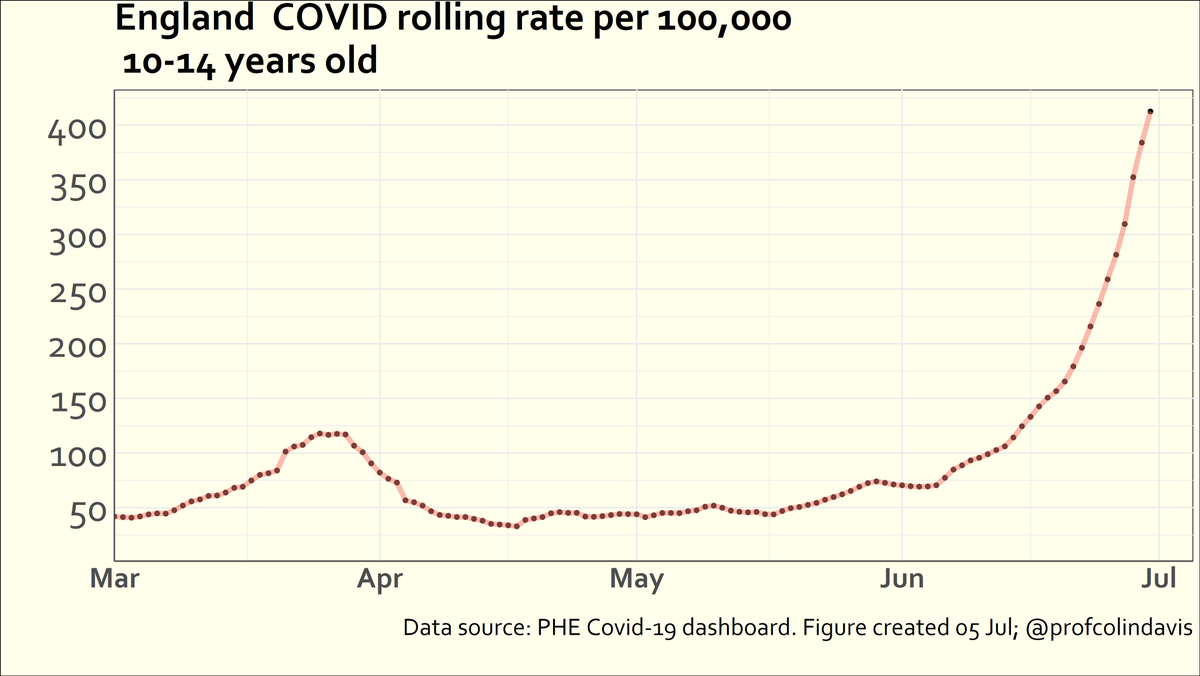
Here's an update to the chart showing the Covid rate for 10-14 year olds in England. Although it's still going up (over 500 per 100K now), it's definitely slowing down. 

That slow down is most apparent on a log scale. As I said before, I'm not too surprised to see this happening when hundreds of 1000s of children are having to self-isolate (other explanations are available, of course). 

Oldham continues to have the highest rate for 10-14 year olds, but with over 6,000 children self-isolating last week (14% of the borough's children), the rate is finally starting to decline. bbc.co.uk/news/uk-englan… 

There are politicians in Oldham calling for self-isolation rules to be changed. Obviously there are many problems associated with self-isolation. But just ignoring the cause and compelling children to be infected seems like a bad solution. (Ventilation, vaccination, masks, etc!)
• • •
Missing some Tweet in this thread? You can try to
force a refresh
















